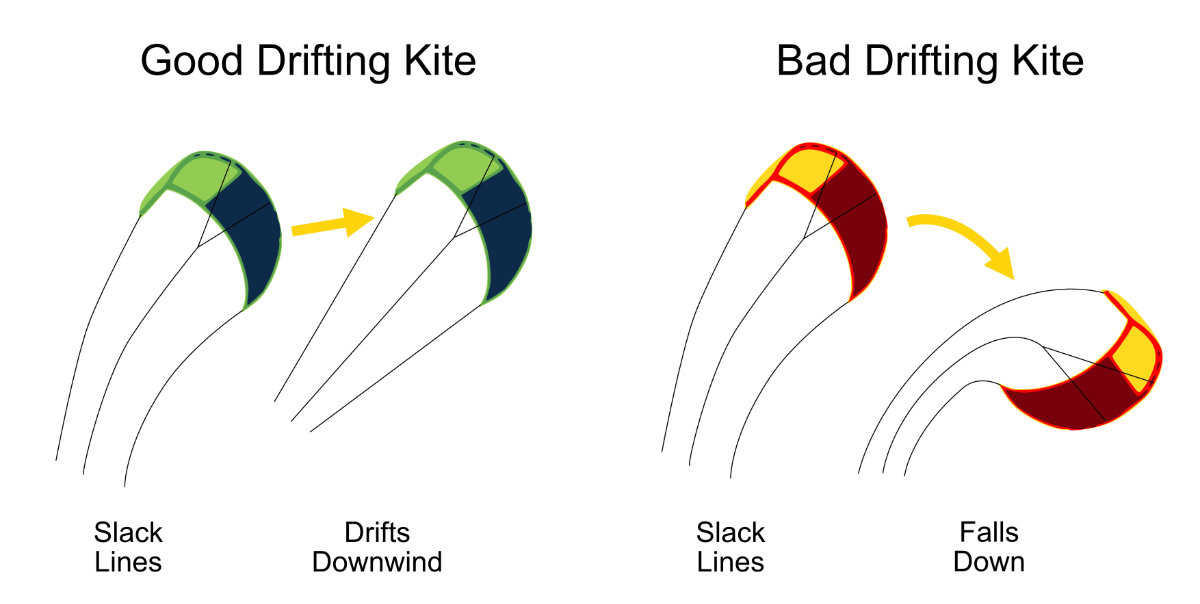The ability of a kite to drift and when it is important.
In any kitesurfing environment, it is common to hear about a kite’s drift performance. But what is it all about? And how does the kite shape influence the drift?
Very simply, the drift is the ability of a kite to keep flying when the tension of the lines momentarily disappears (normally when the lines get a bit of slack).
When the lines get slacked, two main factors that help the kite to keep its position in the wind window change or disappear. The first is obviously the line tension, which stabilizes the kite and gives it direction. The second is more subtle: when the kite line slack, it means the kite flies downwind, reducing the wind pressure on the canopy, therefore the lift on the kite wing.
As said, a kite with good drift, once the tension from the lines is drastically reduced, keeps its position flying downwind, without immediately destabilizing and crashing in the water. On the opposite, a kite with a bad drift will need constant traction from the lines to prevent it to flip, back stall, overfly or fall from the sky.
The importance of a good kite drift.
Lines getting some slack can be more common in specific disciplines of water kiting than others like wave riding, jumping, or unhooking, where it is common for the rider to momentarily move faster than the kite in the downwind direction.
Imagine for example that you catch a nice wave with your surfboard (chek how to choose a good wave board here), you want to have the pure surf feeling, forgetting about your kite. In this case, you want to leave it in a ‘parked’ position, without you to keep steering it. In this situation, the ideal behavior is that the kite keeps going downwind (drift) even if you are bottoming the wave at high speed, being faster in the downwind direction for some moments. If the kite has a good drift, you can simply forget about it and enjoy the pure surfing feeling, on the contrary, if you need to keep steering the kite to keep it forward in the flying window, your wave surfing experience can be a bit spoiled.

During a kiteboard jump, a good drifting capability can come in handy if we fail to recall the kite at the right time. In fact, bad timing in that will lead us to be downwind compared to the kite position, completely slaking the lines. At that point with no good drift, the kite will immediately fall in the water and will force us to a kitesurfing relaunch. If the mistake is huge no drift will save us, but if we happen to be just slightly late in the recall, a good drift can help to keep the kite flying.
In a low wind situation, when the wind tends to fade in some moments with some gusts, a good drift prevents the kite from falling into the water and having a very difficult kite relaunch.
Talking about low wind, imagine when we are hydro foiling: we can reach considerable speeds, and pointing downwind might result again in slacking significantly the lines, some drift capabilities might turn out to be quite handy.
Also, when we play with some unhooked tricks, having some line slack is a must and a stable kite in the drift helps a lot to edge hard on the board for the optimal jump and makes landings smoother.
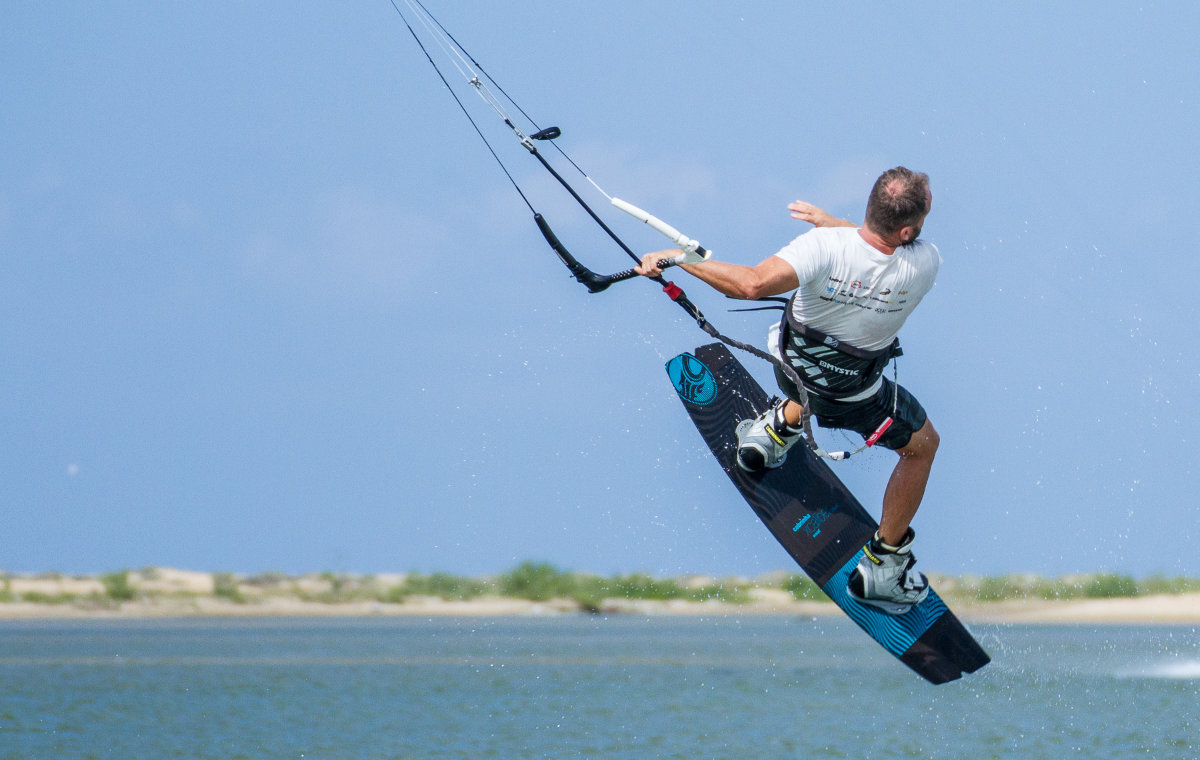
How the kite shape influences the drift.
Obviously, the aspect ratio, the steepness of the arch, and the shape of the tips are the basic factors determining the drifting capability. We already discussed the effects of the kite shape here, but not specifically about the drift.
Low aspect ratio kites normally turn out to have better drifting capabilities than high aspect ones, which are more efficient and have better upwind capabilities, but lose stability and flap with the canopy way more easily, if not put in proper tension by the lines and with the correct angle of attack.
Steep arch kites offer way better drifting stability than flat or bow kites, due to the more extended vertical part of the canopy, they work as a stabilizer. Flat kites, when slaked, look like to slide sideways and fall, while steep arch ones are better kept in position by their deep and long vertical tips that act like the rudder’s fin.
The following graph shows the concept more clearly:

Ultimately the shape of the tips can make a big difference: pointy tips are not effective in keeping the kite stable, while wide tips maximize the drifting stability. That, of course, is still connected to the amount of canopy that creates resistance to ‘sliding’ towards side directions.
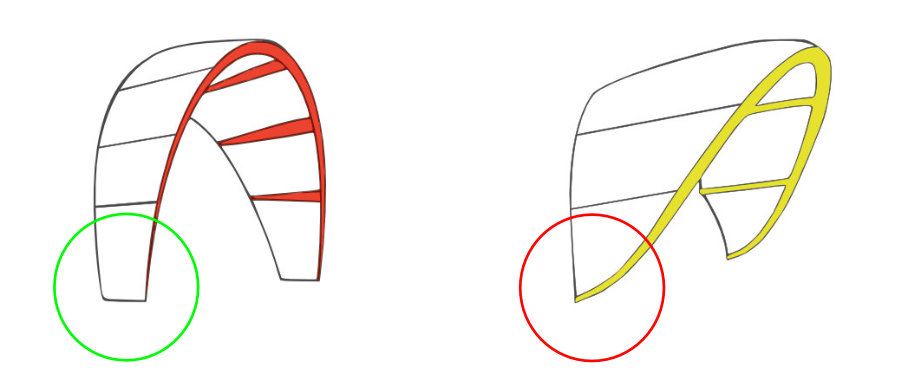
Another factor that can influence the stability during the line slack is the weight of the kite: a lighter kite will have more capability to keep floating when drifting downwind, with less wind pressure on its canopy.
We already mentioned that slacked lines result in the kite to flight downwind: this reduces the apparent wind speed on its canopy and as of consequence we have lower pressure on the canopy. The lighter the pressure, the less lift comes into play to keep the kite floating. Clearly, a lighter kite will have more chances to keep staying flying in the sky than a heavier one in this situation of lower lift.
These characteristics are very present in most wave riding kites and in many freestyle ones. Kites, which instead offer high performance, the best upwind capability, and less flexibility according to the wind conditions, are normally poor drifters because they require a high aspect ratio in their shape and normally tend to have flatter shapes. To see which kites have these shape characteristics, you can check this post.
Which wind conditions make it important to have a good drifting kite.
As we already mentioned in the light wind some drifting capabilities can be useful. Same as for very gusty conditions, when we can have big variations in the wind intensity and moments when the speed of the wind goes very low.
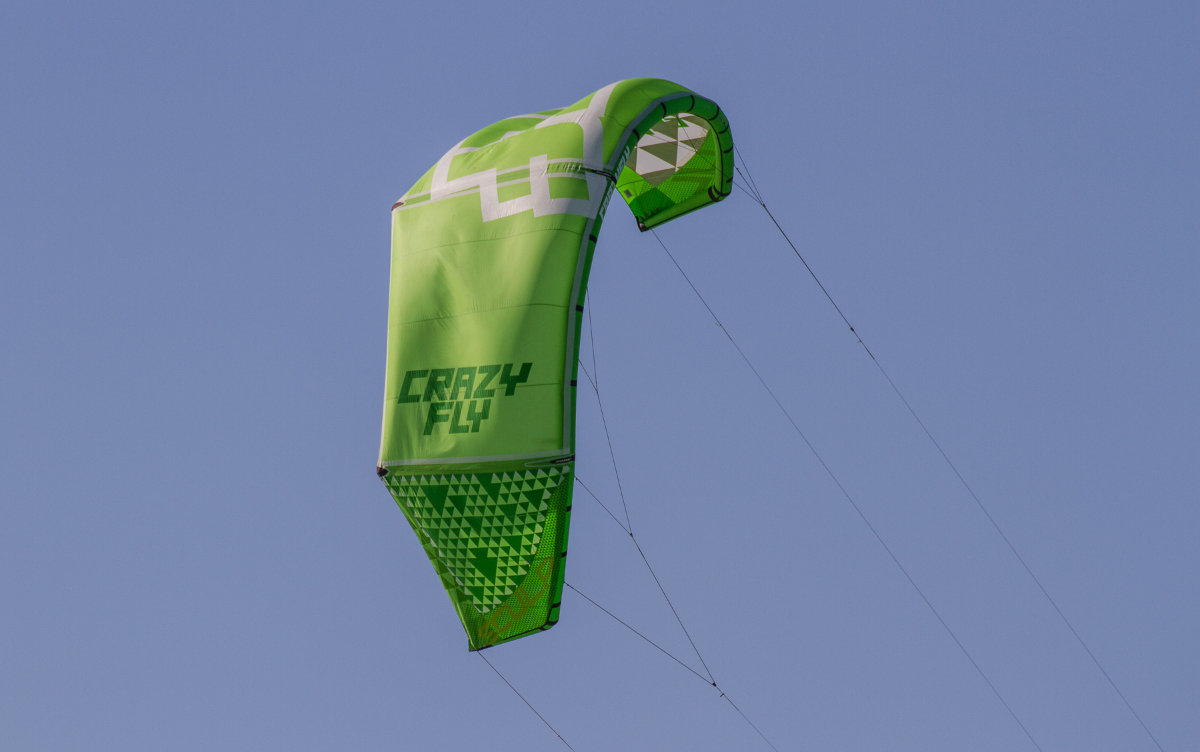
On the contrary, when the wind tends to be strong, the drift of the kite starts to be less important. Even if the kite gets some slack and it moves in the direction of the wind, the reduced apparent wind is still strong enough to power the kite’s lift and the tension on the lines gets reestablished way faster.
This reduces the chances also for poor drifting kites to lose stability and fall down.
When do we need a good drifting kite?
The disciplines that strongly require to use of kites with great drift capabilities normally are: wave riding, unhooked wake style sessions, low wind, and gusty conditions, especially for beginners. In fact, good drifters tend to be more beginner-friendly than others.
On the opposite side, for racing, when we need the best upwind performance, for high jumping and hang time competitions, and basically, in all those cases where the pure performance of the kite is more important, the drifting capabilities tend to be less relevant and can be sacrificed.
In the end, when it comes to choosing the right kite, we always need to consider what we are going to do with it, and in which conditions we normally find ourselves. To help us in the choice we can also read about different kite shapes here.
So, what do you think about this topic, do you agree with the post information, or do you have different ideas on the topic? Why don’t you comment below?

Travel Mug
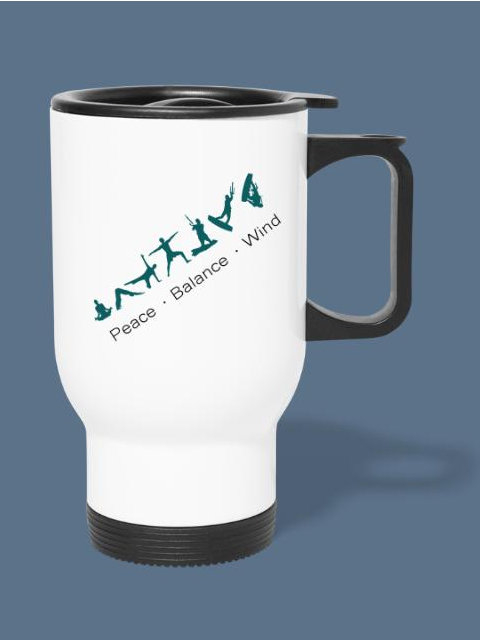
Logo: Peace Balance Wind
Promote your Kite School for free!
Index your Kite School in our database.
You will get free lifetime visibility on Kitesurf Culture website.
If you have a website, it will provide precious backlinks to improve your SEO ranking
Relevant Posts
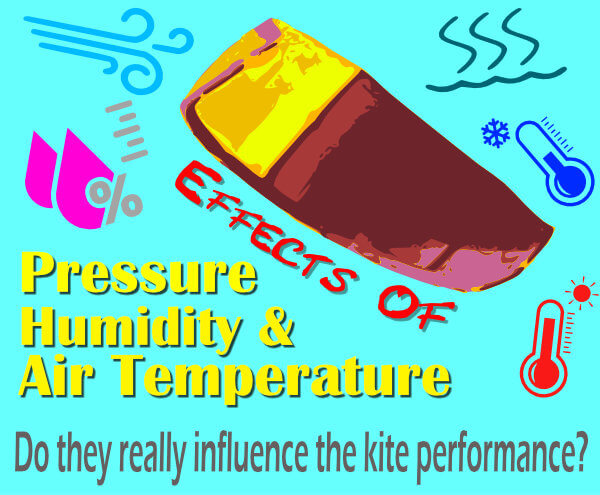
Effects of the air pressure, temperature and humidity in kitesurfing
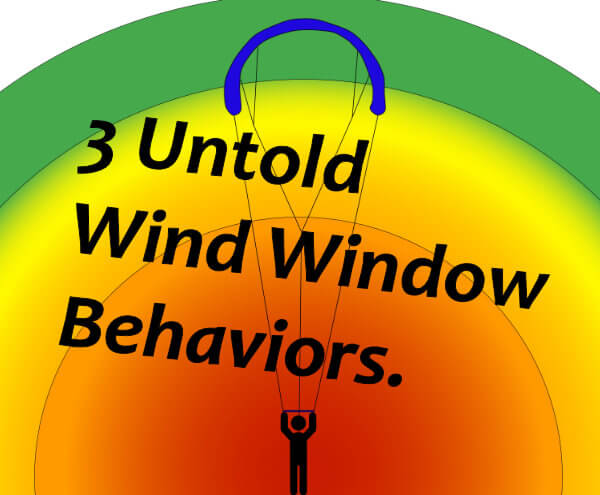
3 Untold Wind Window Behaviors.

Do you really use the right kite shape for your riding style?
Get free Kitesurfing Resources and Tips
If you like our content and you want to be informed on the next blogposts release, please subscribe here. That will also help us to continue to provide quality content:
Give us your opinion.
Comments
Sh
very good article. but I was in doubt when you said that these types of kites are recommended for light wind and the kites known for this type are on the other side: contra, breeze
4 years ago
Answers :
Gabriele
Hello Sh, the kites which are suitable for beginners, in my opinion, are medium aspect ratio and with a bit of a flat arch shape (hybrid or bow), because they have high depowered capabilities and deliver good power for riders which are not yet smooth in their balance on the board and tend to drag a bit more than needed. You can check this article for more details on what I mean. Contra and breeze have a high aspect ratio and in my opinion are a bit more difficult to manage by beginners, considering also the difficulty for the relaunch. I understand for in the blogpost above it it is said low aspect ratio and steep arch shape provide better drifting performances, but for beginners, I would have a bit of a more flatter kite. Of course, drifting stability helps the beginners, but depower range and more power delivery help the new riders to stay on the board more consistently. In the end, it is all about nuances. Let's say that for a beginner when to depower and lift of the kite are similar, a better drifter is to be preferred. I hope I clarified my point of view.
4 years ago
Steve Burkey
Thanks. Very interesting information
4 years ago
Answers :
Gabriele
It's a pleasure, Steve :)
4 years ago
Toddler Premium T-Shirt
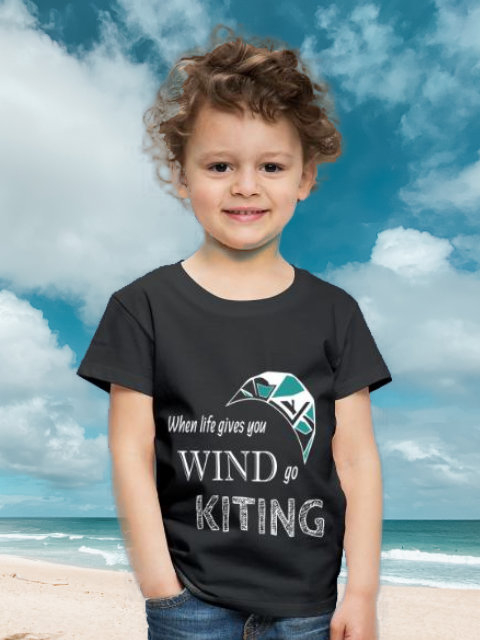
Logo: When life gives you wind go kiting
Promote your Kite School for free!
Index your Kite School in our database.
You will get free lifetime visibility on Kitesurf Culture website.
If you have a website, it will provide precious backlinks to improve your SEO ranking
Relevant Posts

Effects of the air pressure, temperature and humidity in kitesurfing

3 Untold Wind Window Behaviors.

Do you really use the right kite shape for your riding style?
Contrast Coffee Mug

Logo: Kitesurfing making gravity optional since 1977
Latest Posts

Kitesurfing Dubai: an honest guide. Tips, Spots & Winds
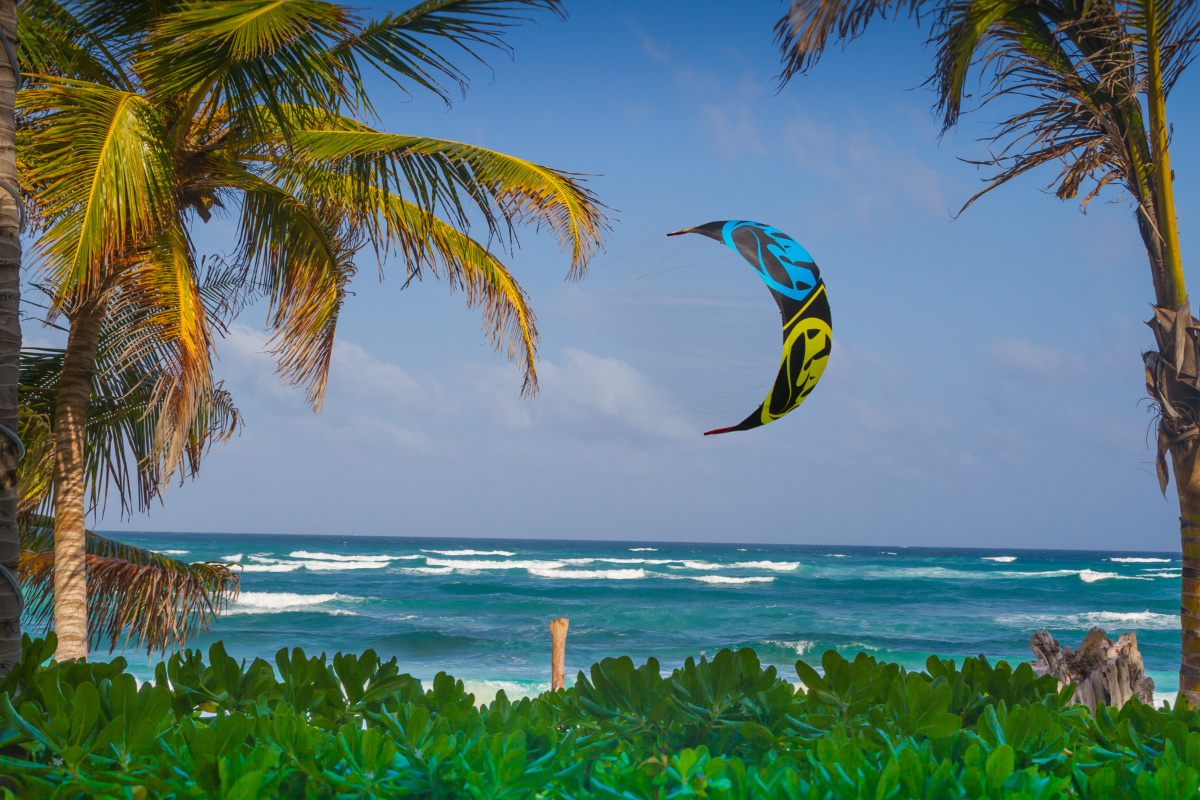
Unwind and learn: best beginner kitesurfing spots worldwide
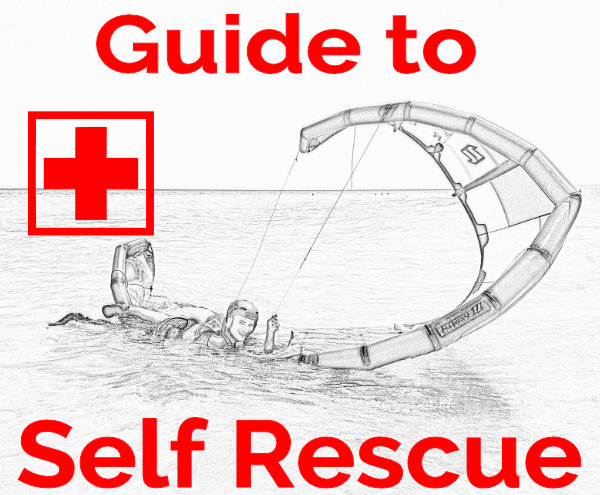
Self-Rescue in Kitesurfing: A Crucial Guide to Safety

Kitesurf Ometepe: an Epic Kite Trip to Nicaragua

Kitesurfing Spring in Andalucia: Unexpectedly Great!
